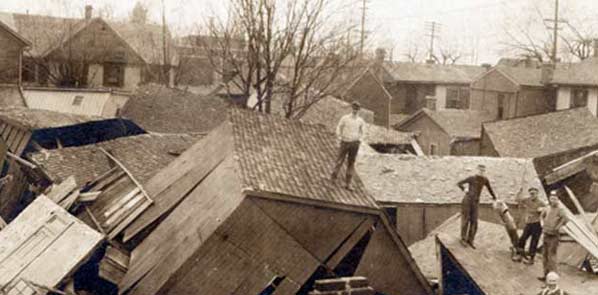The growth of farming and land clearing significantly changed the land and its drainage characteristics.
History | Settlement
When this area was settled, primary land use was and still remains agricultural. Like the majority of settlements in northern Ohio, the early pioneers of the Chippewa area were primarily farmers. The area comprising the Chippewa Watershed was originally settled through the Connecticut Western Reserve and a United States Military Land Treaty in present-day Northeast Ohio. A heavy flood of migrants came from New York and especially New England, where there had been a growing hunger for land as population increased before the Revolutionary War. Most moved to Ohio by wagon and stagecoach, which followed former Indian paths such as the Northern Trace. Many also traveled part of the way by barge on the Mohawk River across New York state. Farmers who settled in western New York after the war sometimes moved on to one or more locations in Ohio in their lifetimes, as new lands kept opening to the west.
The growth of farming and its requisite land clearing significantly changed the land and its drainage characteristics. No formal flood control system of any kind existed.
Ohio was victim to many serious floods dating back to the beginning of the century. In 1913, a storm lasting four days dropped 10-1/2 inches of rainfall over most of Ohio.
According to the Wooster Daily Record, "Wooster people waded home from work Monday evening along streets that in places resembled rivers. Old Killbuck went on a wild rampage, rising steadily Monday afternoon and night, reached a stage Tuesday that it had never reached before."
The entire state felt the impact of the 1913 storm, but there was more to come later in the century. The photo above shows Dayton residents standing on houses that were torn to pieces by the flooding rivers. For more details on the floods in Ohio, visit the news photos section.
